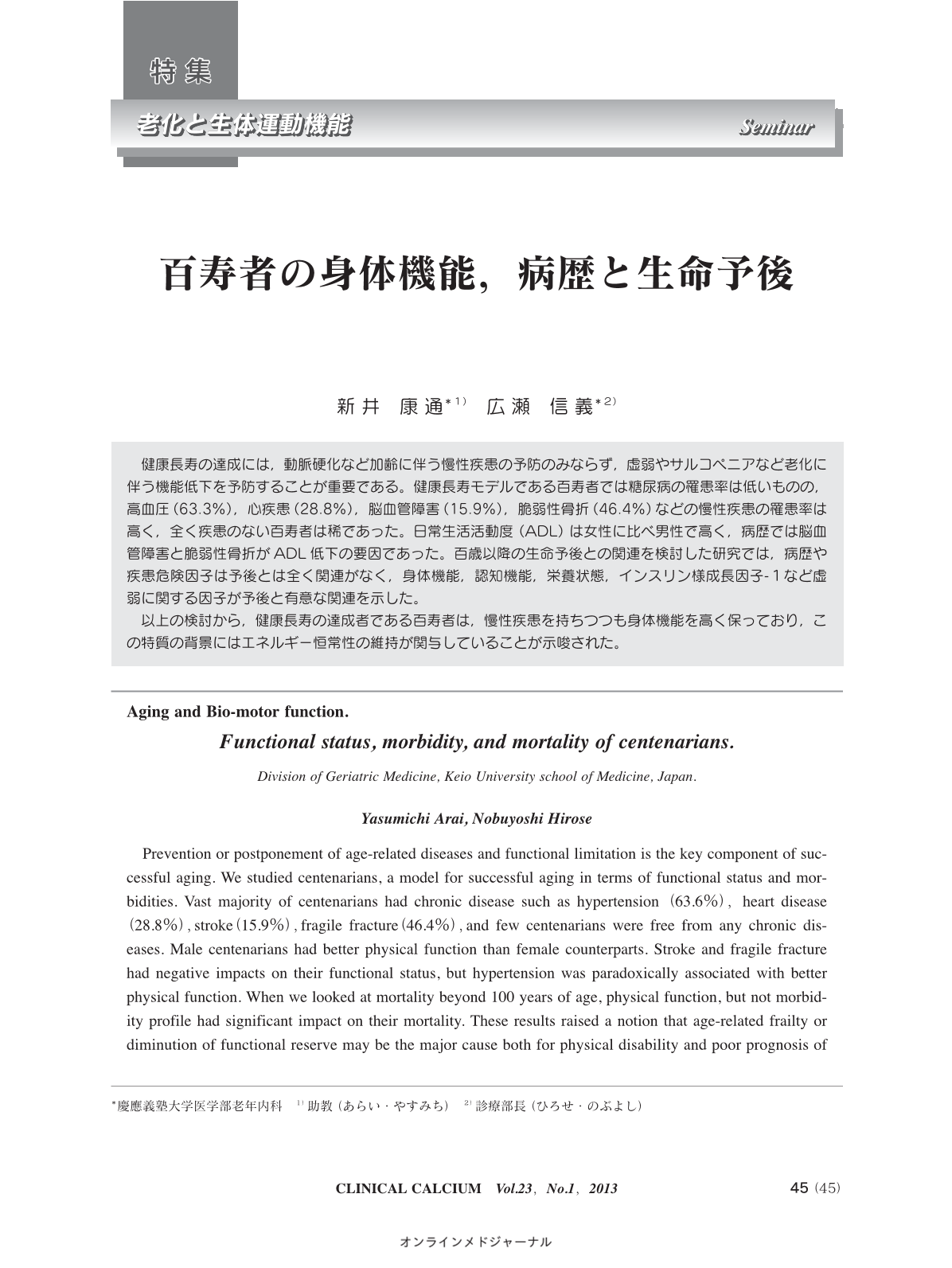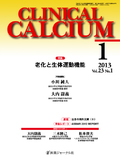Japanese
English
- 有料閲覧
- Abstract 文献概要
- 1ページ目 Look Inside
- 参考文献 Reference
健康長寿の達成には,動脈硬化など加齢に伴う慢性疾患の予防のみならず,虚弱やサルコペニアなど老化に伴う機能低下を予防することが重要である。健康長寿モデルである百寿者では糖尿病の罹患率は低いものの,高血圧(63.3%),心疾患(28.8%),脳血管障害(15.9%),脆弱性骨折(46.4%)などの慢性疾患の罹患率は高く,全く疾患のない百寿者は稀であった。日常生活活動度(ADL)は女性に比べ男性で高く,病歴では脳血管障害と脆弱性骨折がADL低下の要因であった。百歳以降の生命予後との関連を検討した研究では,病歴や疾患危険因子は予後とは全く関連がなく,身体機能,認知機能,栄養状態,インスリン様成長因子-1など虚弱に関する因子が予後と有意な関連を示した。 以上の検討から,健康長寿の達成者である百寿者は,慢性疾患を持ちつつも身体機能を高く保っており,この特質の背景にはエネルギー恒常性の維持が関与していることが示唆された。
Prevention or postponement of age-related diseases and functional limitation is the key component of successful aging. We studied centenarians, a model for successful aging in terms of functional status and morbidities. Vast majority of centenarians had chronic disease such as hypertension(63.6%),heart disease(28.8%),stroke(15.9%),fragile fracture(46.4%),and few centenarians were free from any chronic diseases. Male centenarians had better physical function than female counterparts. Stroke and fragile fracture had negative impacts on their functional status, but hypertension was paradoxically associated with better physical function. When we looked at mortality beyond 100 years of age, physical function, but not morbidity profile had significant impact on their mortality. These results raised a notion that age-related frailty or diminution of functional reserve may be the major cause both for physical disability and poor prognosis of centenarians. Previous results from our study suggested that stability of energy homeostasis, in which neuroendocrine system has a key role, may be important to maintain physical function at the extreme old age.



